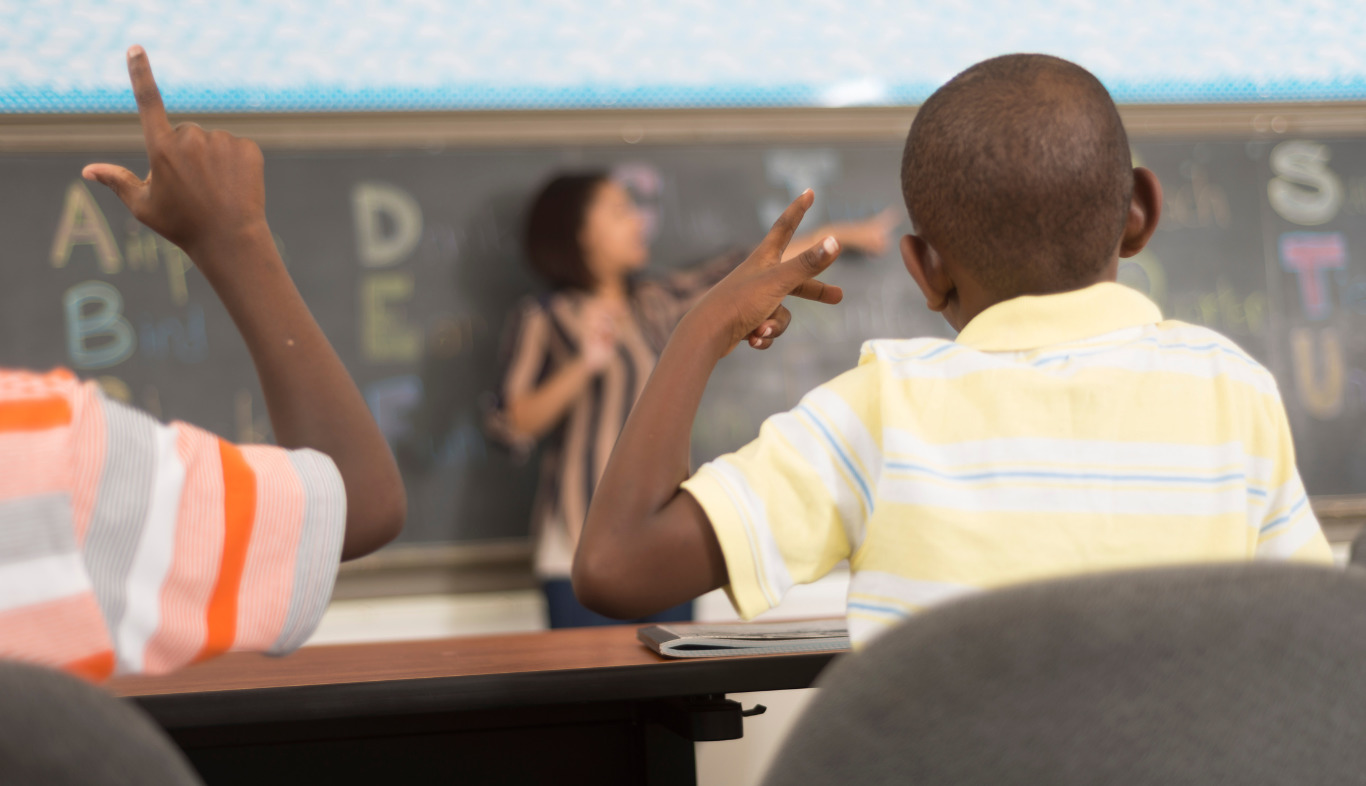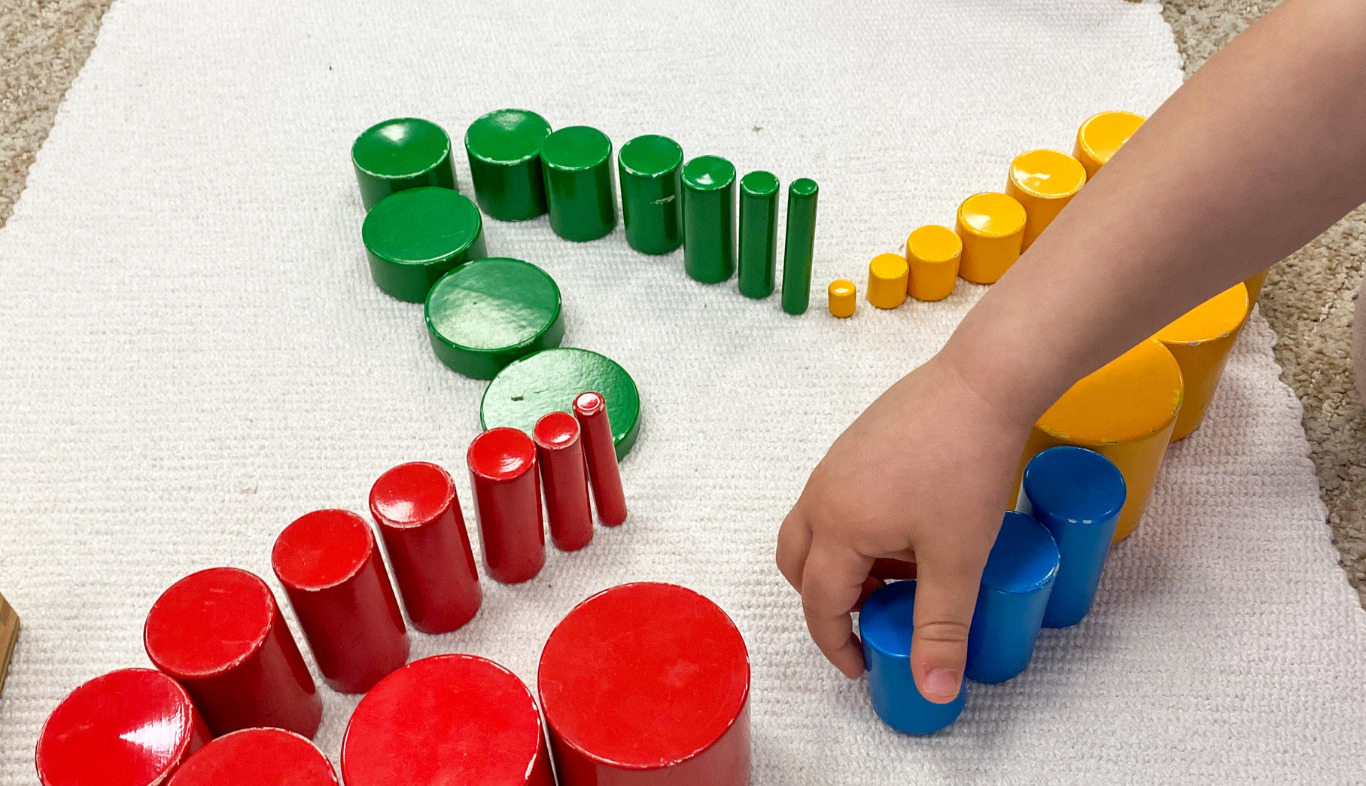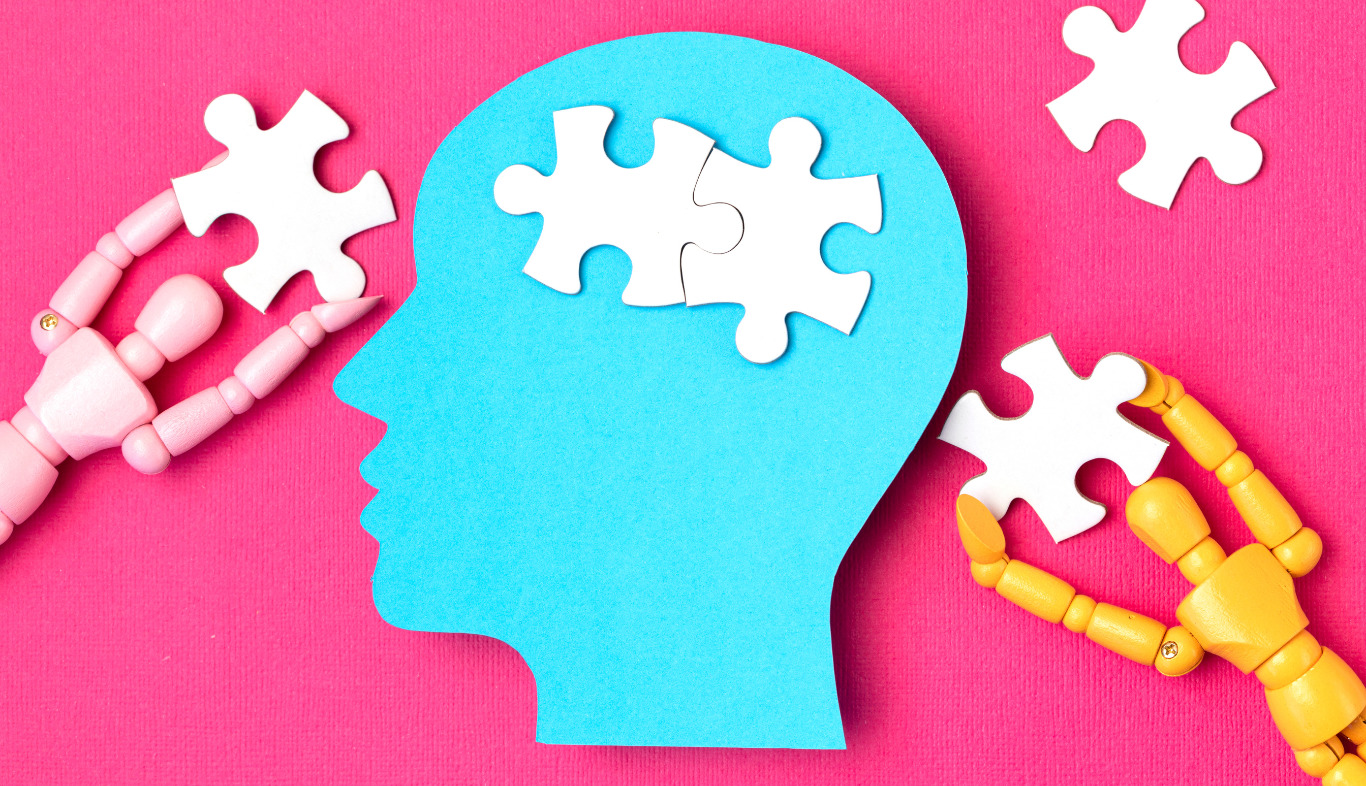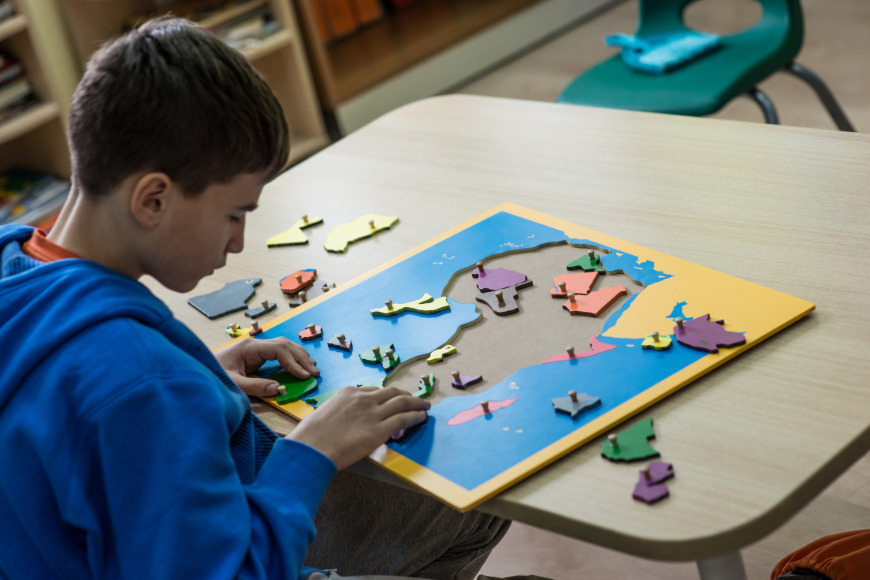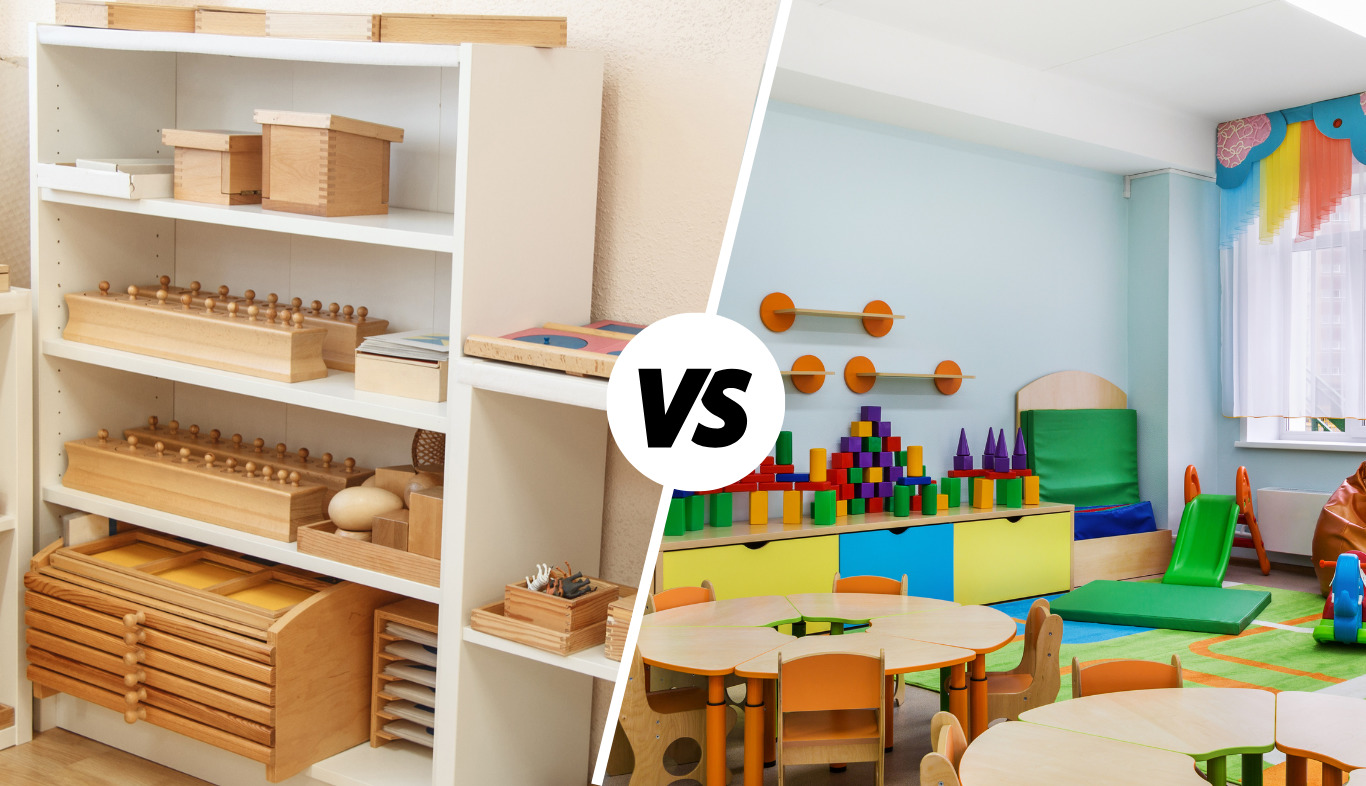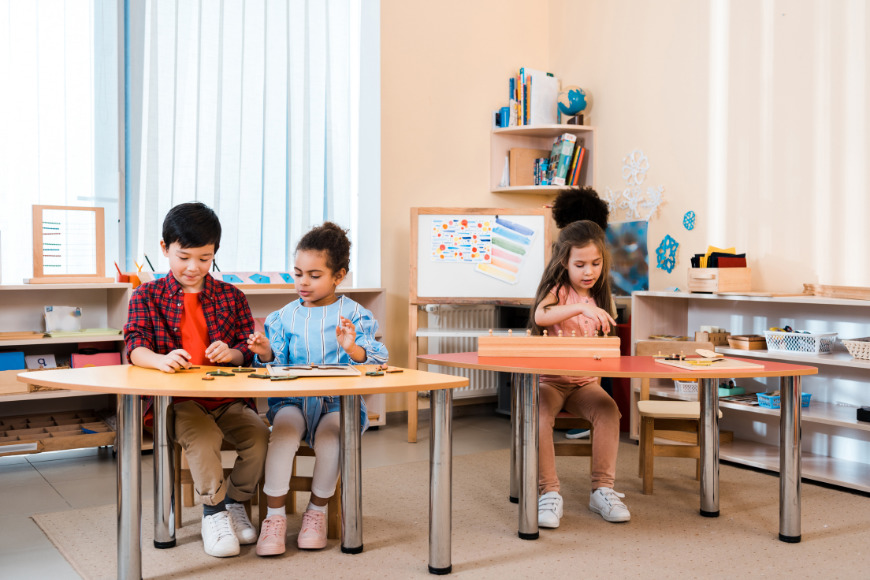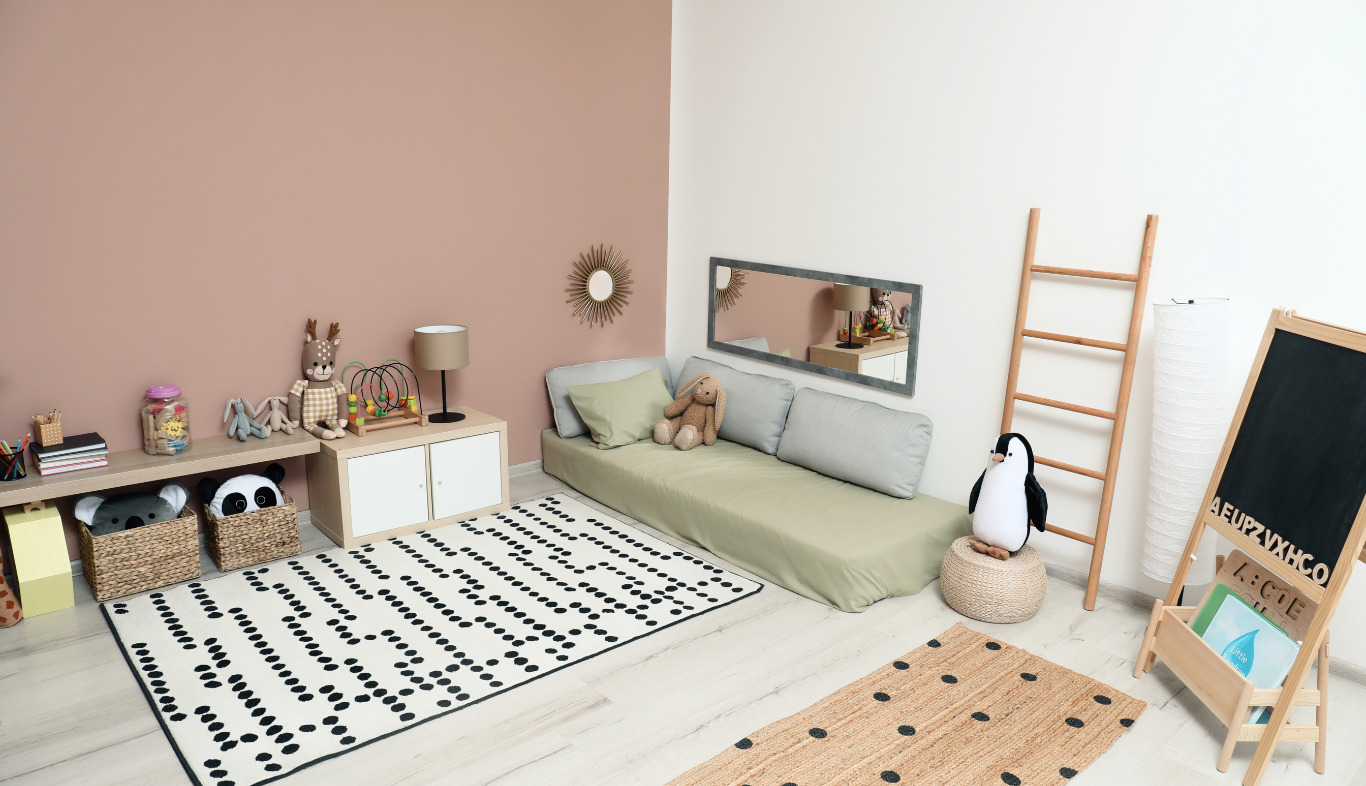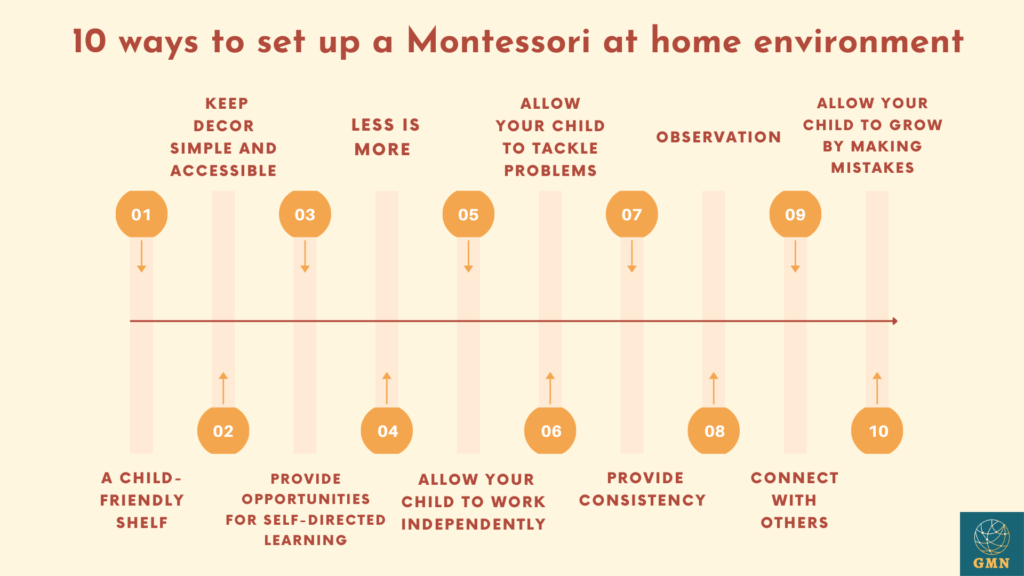Education reforms in the 21st century, along with changing needs and diversity in the classroom, require varied and effective teaching methods to provide meaningful learning experiences for children. A comprehensive, inclusive setting emphasizes more than just teaching the entire class.
In an article from 2012 published in the Electronic Journal of Inclusive Education, authors Virginia Heslinga and Erica Nevenglosky detail the challenges that schools are facing to make learning environments more inclusive by meeting the diverse needs of students. Educators and administrators acknowledge the reality of different learning styles and recognize the need for interactive learning that engages visual, auditory, spatial, linear, tactile, and kinetic styles of learning.
Thus, adding sign language as an additional language can promote a positive learning attitude to a classroom because it fulfills students’ various needs and styles. Learning sign language is a social-emotional learning experience that introduces students to a new perspective through a new language and culture. It also helps students improve their skills in writing, reading, and spelling or vocabulary.
What is Sign Language?
Sign language is any form of bodily communication, particularly using the hands, gestures, arms, and facial expressions. At times, when it is difficult to communicate through words, teachers prefer using sign language. Simple smirks, nods, or indications can be used to express sign language in a basic manner. Pressing the index finger against the lips to hush noisy children, raising hands to speak, and shaking hands to say hello are a few basic forms of sign language. Apart from facilitating communication with people from other regions, sign language also aids children and adults in a variety of areas.
There is no single cross-cultural sign language and according to an article from the AI-Media, the number of official sign languages used around the world today ranges from 138 to 300. The most common forms of sign language are American Sign Language (ASL), British Sign Language (BSL), and Australian Sign Language (Auslan).
Sign language can be utilized to bridge the gap when vocal communication is not possible, such as between speakers of mutually unintelligible languages or when one or more potential communicators have hearing difficulties.
How Does American Sign Language (ASL) help in Fulfilling the Needs of a Diversified Classroom?
American Sign Language has a long-term positive effect on a child’s confidence and self-esteem by improving their communication skills. Exposing children to this form of language may enhance their vocabulary and reading skills, which in turn may lead to better achievement academically. It benefits not only children with hearing disabilities, but also other children to communicate in a more effective way.
Benefits of American Sign Language
In early childhood education, introducing sign language has numerous benefits. Introducing American Sign language (ASL) in a diversified classroom helps in the following ways:
- Gestures and signs usually make things easier for children to understand. As their vocabulary expands, both their receptive and expressive abilities improve. They learn that speech can be represented with expressions and visual representations. Gestures and communicative expressions encourage the children to connect with advanced and varied cultures. They tend to build rapport with peers and understand nonverbal clues as an essential life skill for success. Students get to learn that all children do not speak the same language as theirs. To communicate with them, ASL plays an important role and with this, children of different cultures (e.g., hearing and deaf) can communicate more effectively.
- It encourages shy and reluctant children to participate in activities and they may become more comfortable communicating using sign language.
- ASL can be used to communicate with children during class. Along with the presentation, an educator can utilize signs to explain an activity to the kids. Children can also communicate with the teacher or their peers, using sign language while upholding classroom decorum and not disturbing the other children.
- It incorporates kinaesthetic and visual learning that makes the language more perceptible. Students who learn in a classroom environment with multiple language expressions will have a better understanding of communication than students who only use one language expression.
- Simultaneously, with the use of sign language, the development of motor skills also takes place concurrently with the language. As the children move their fingers to represent the signs, their gross motor skills are developed with the various folds of fingers.
- ASL is a visual language, so it is easier for pre-verbal children to use to express their needs. The ability to sign can help a child express their fundamental needs, such as hunger or pain, or even when they are upset, which typically prevents tantrums and frustration. Sign language creates a bond between parent-child and educator-child as this language requires eye-to-eye and tactile contact.
- When sign language is introduced in the curriculum, the understanding is done by each and every child as a child grasps visual expressions quickly. Various sorts of charts, graphic organizers, word lists, pictures, and alphabet cards are used for creating the right understanding of the daily curriculum. The children are encouraged to integrate through facial expressions and a peer-correct response could be created.
- Sign language is not only for the development of languages but also is a “brain booster.” The right hemisphere of the brain is more dominant for visual aspects and when it receives visual cues or signs it perceives them. Once received by the right hemisphere, the left hemisphere processes it. This way, when both sides of the brain work to decode the signs, synaptic connections are formed within the brain and across hemispheres. Hence, ASL is a brain booster as both hemispheres interact, which creates a second source of language for children to access. It also engages them in multisensory learning.
- Understanding that speech has visual symbols makes the development of reading skills come along easier as children enter school. After the integration of varied visual aspects, children can decode writing and reading quicker as compared to those who learn through other modes of the same lesson.
- Another important and interesting part of the usage of sign language in the classroom is that it increases the ability in our reaction time and peripheral vision. Reaction time refers to the amount of time that passes between the moment we perceive something and the moment we respond to it. Peripheral vision is what we can see around us without having to turn our heads.
How to Inculcate American Sign Language (ASL) in the Primary-Level Curriculum?
ASL can be used when teaching new concepts or when reinforcing previously introduced materials, such as
- Greetings: The first signs we can introduce to a child are hello, goodbye, good morning, namaste, etc., which are used every day. Teaching how to sign commonly used greetings helps the child communicate more effectively.
- Alphabets: teaching how to sign letters or characters of an alphabet (a to z) helps children to build reading skills more easily as they can learn to form letters and words using their faces and fingers.
- Numbers-teaching how to sign numbers helps children to learn about quantity and counting.
- Days of the week: teaching how to sign days of the week in sign language helps children to learn about various events and their occurrences.
- Colors: teaching how to sign colors helps children to learn about the colors present in their surroundings and how to differentiate them.
- Feelings: communicating feelings through sign language, such as sad, happy, hungry, etc., can help a reluctant child become more confident while communicating.
- Sight Words: It is the most common word that is used in our daily life. Teaching how to sign sight words helps a child in effective language development.
When teachers and educators use sign language along with language lessons, they can support the learning of all children with diverse needs and help them learn the concepts in a meaningful context.
Final Words
Sign Language adds one more way of communication to the child’s belt. In early childhood, it is easier to adapt to a new language easily and children grasp the knowledge quickly. It will also help to communicate where words could not play a role.
Children who learn sign language gain social acceptance, confidence, comprehension, and communication by learning through scaffolding, layering language, and promoting active and interactive learning.
References
- Cook, R.E., Tessier, A., & Klein, M.D. (2000). Adapting early childhood curricula for children in inclusive settings (5th ed.). Englewood Cliffs, NJ: Merrill Publishing.
- Doidge, S. (2021, November 17). 5 Ways to Bring Sign Language Into Your Classroom. Kami. Retrieved October 19, 2022, from https://www.kamiapp.com/blog/sign-language-in-the-classroom/
- Hubler, M., & Hubler, L. (1999). Time to Sign with Children Learning Guide. Palm Bay, FL: Time to Sign.
- Schneden, Angela M., “Sign to learn : sign language as a teaching tool in hearing classrooms” (2006). Graduate Research Papers. 1475. https://scholarworks.uni.edu/grp/1475
- Sign Language and Its Importance As you Teach | Education World. (n.d.). Retrieved October 19, 2022, from https://www.educationworld.com/blog/sign-language-and-its-importance-you-teach.State, Houston & Simpson, Cynthia & Lynch, Sharon. (2007). Sign Language: Meeting Diverse Needs in the Classroom. Exchange-Exchange Press. 176.
Why Sensorial Activities are Important for the Children’s Growth?
Learning begins at birth when a child observes through their senses (e.g., sight, taste, smell, hearing, touch). This is the reason why newborns respond to sound and touch. Sensory learning is a natural way for children to learn about their environment and from real-life experiences to develop problem-solving skills.
“The senses, being explorers of the world, open the way to knowledge. Our apparatus for educating the senses offers the child a key to guide his explorations of the world…” (Montessori, 1967)
Dr. Montessori’s insight into educating the child’s senses is a remarkable aspect of her method. According to her research, the five senses of taste, touch, sight, smell, and sound stimulate a child’s understanding of the physical, social, material, and natural worlds. Thus, experimenting with sensorial activities helps children comprehend information about their world.
This article discusses how sensorial play teaches children about their five senses and why it is important to incorporate them into the Montessori classroom. Finally, the article explains how to incorporate sensorial play into your home or life.
What is Sensorial Learning?
“Tell me, and I forget. Teach, and I remember. Involve me, and I will learn.”
This statement is attributed to Benjamin Franklin, and the sentiment applies to the early age of development.
Sensorial learning is a teaching method that stimulates a child’s five senses: touch, hearing, sight, taste, and smell. It includes activities that help them learn about colors, numbers, shapes, textures, object sizes, etc. It serves as a stepping stone to organized intelligence, allowing children to adapt to their environment. Sensorial exercises help children learn how to organize their environment, classify objects, and use logic in order to make sense of the world around them. It also teaches perspective, discrimination, and order.
For example, a child might be asked to identify an object by touching it or asking what food they think is based on its smell and taste. Sensorial learners are often more engaged than visual learners because they have more sensory input about the material being studied.
Benefits of Sensorial Activities to the Child.
- It helps children develop a rich vocabulary, explore their environment, and experience different textures.
- It helps them understand their own emotions through self-awareness and mindfulness.
- It teaches children how to focus on one thing at a time without being distracted by other distractions in their surroundings.
- It enhances a child’s ability to remember what they have learned by allowing them to learn through experience.
- It helps them build necessary skills that include cognition and logic.
- It builds nerve connections in the brain’s pathway by accomplishing more intricate tasks stimulating their senses.
- It helps develop social skills, gives them a sense of belongingness, develops their compassion, practices empathy, and enhances their communication skills.
Why do Sensorial Activities Play an Important Role in Montessori?
Sensorial activities play a crucial role in the development of the whole child. Children learn to perceive, interact, and experience the world around them and get prepared for success in higher education, life, and well-being. A Montessori classroom is designed meticulously to emphasize all five senses to introduce and develop everything that can be perceived. It helps prepare the children’s mathematical minds and encourages early language skills.
In a Montessori curriculum, sensorial activities are incorporated into all areas of learning. When compared to conventional education, Montessori education stands out because of its holistic approach to learning. Educating the whole child helps the school focus on all aspects of a child’s development, i.e., intellectual, emotional, physical, and social.
“Our work is not to teach but to help the absorbent mind in its work of development. How marvelous it would be if by our help, if by an intelligent treatment of the child, if by understanding the needs of his physical life and by feeding his intellect, we could prolong the period of functioning of the absorbent mind!” ― Maria Montessori, in The Absorbent Mind.
In a Montessori school, sensory play is set up in a prepared environment with controlled levels of error, so that children can safely explore and learn differences and similarities in their environment using their senses. It provides a child with an enormously rich sensory experience that promotes structured growth and development more than any other form of learning. Thus, helping children make connections in the brain increases memory and cognitive ability.
List of Montessori Sensorial Activities
Dr. Maria Montessori divided a child’s sensory learning into eight categories:
- Visual work– As the name suggests, the purpose of visual work is to help children categorize and notice the similarities and differences in objects they see. It includes discrimination to dimension (size, length, width, and breadth of objects), color (color awareness), and form (shape awareness). Activities included are:
- Dimension:
- Pink Tower,
- Brown Stairs,
- Knobbed and Knobless Cylinders,
- Red Rods, etc.

- Color:
- Primary Colors Box,
- Secondary Colors Box 2,
- Secondary Color Wheel,
- Value (Black, White, Gray) Color Tablets,
- Mixing Black and White, color Gradation Color Box 3
- Form:
- Tactile work- It focuses on enhancing the sense of touch to heighten their perception and understanding of the world around them. The purpose of tactile work is to help children develop the ability to discriminate between coarse and fine when they touch. Activities included are:
- Mystery Bags or Stereognostic Bags
- Matching Mystery Bag
- Rough and Smooth Touch Boards
- Rough and Smooth Touch Tablets
- Fabric Box

- Baric work- It aims to help children learn about pressure and weight. It helps them to understand the objects around them and think critically. Activities included are Baric tablets.
- Thermic work- The thermic activity aims to help children distinguish between temperatures and develop their sense of temperature. It includes hot and cold, warm and cool, and the relationship with the temperature of the child’s own body. Activities included are:
- Thermic Bottles, and
- Thermic Tablets.
- Auditory work- As the name suggests, this work helps a child in improving their sense of hearing. It helps children to differentiate between distinct sounds and heightens their ability to notice variations in sound. Activities included are:
- Montessori bells, and
- Sound cylinders.
- Olfactory work- The purpose of olfactory work is to develop the children’s sense of smell. It helps them to differentiate between distinct smells. Activities included are: smelling bottles.
Montessori Smelling Bottles - Gustatory work- It aims to help children explore their sense of taste (Is it sour, bitter, or sweet?). In these exercises, a child will learn to differentiate between a variety of food and taste. Activities included are:
- Tasting food prepared by various practical life activities, such as grating, slicing, and
- Tasting bottles.
- Stereognostic work – It is also known as tactile gnosis, the sixth sense, or muscle memory. The purpose of stereognosis work is to develop the tactile or the sixth sense by using a sense of touch. It helps a child increase the ability to recognize or characterize an object without using sight, sound, smell, or taste. Activities included are:
- Mystery bags,
- Painted and sandpaper globes,
Throughout the Montessori curriculum, multiple sensorial activities focus on descriptive language, recognizing, observing, categorizing, and matching patterns, etc. It not only helps a child improve their senses but also helps them to become independent and confident.
Why is it Important to Incorporate Sensorial Activities in a Classroom?
With unavoidable situations like the pandemic, more and more children are growing up in the digital era. We need to be concerned that they don’t have the opportunity to explore all of their senses. Thus, we, as parents and educators, should be responsible for providing them with a solid foreground for education. Providing more abstract education that focuses on physical and mental engagement from an early age is important.
Montessori sensorial play is learning that every child will love. Dr. Maria Montessori’s introduction focuses on training children into healthy, happy, confident, and independent adults. It allows them to build critical skills needed for their development and beneficial relationships with the world around them.
Sensory activities introduce complex, abstract concepts to children tangibly and experientially. Thus, this approach sets the foundation for all further academic pursuits and provides an incredible educational experience. It is a learning that children will carry through their life. The sooner children are exposed to different sensory activities, the better they will observe, understand, and process the information.
How to Incorporate Sensory Play at Home?
Incorporating sensorial work into your home can be done by creating an environment well-prepared where children can explore, learn, and understand their world through the five senses.
A sensory table is a great way to engage children with their environment and help them explore the world through their senses. It can be purchased online or made at home using various materials, as it is easy to prepare. These tables are great for helping children explore their world through the five senses of sight, sound, touch, hearing, and sense of taste. It is amazing what children will discover that they can do with these sensory tables.
You can also use those, as mentioned earlier, Montessori sensorial activities and incorporate them along with the regular activities prepared at home. For example, if a child is learning food preparation, you can add gustatory activities. If a child is learning to recognize objects, put miniature objects into a bag, make it a mystery bag, and ask them to put their hand in the bag and pick one object and ask them to guess the object they are holding, and so on.
Each of the Montessori sensorial play activities is easy to set up at home and is also fun. These activities allow children to identify objects with their senses while learning new ideas.
Final Words
In the coming future, a child’s development is not only about their brain. A child needs to grow with knowledge that lasts long, sensorial play benefits children because of its rich, abstract nature. Children enjoy their activities and develop their senses, cognitive skills, and overall growth.
References
- Montessori, M. (1967). The Discovery of the Child. Fides Publishers.
- Montessori, M. (1967). The Absorbent Mind (C. A. Claremont, Trans.). Holt, Rinehart and Winston.
How Does Montessori Education Help to Develop Semantic Memory at an Early Age?
Education is the central way to procure knowledge. Early childhood education is of the utmost importance as it not only forms a foundation for learning but it also affects the creative thinking, cognitive, and social and emotional development of children. During the early years, the environment plays a significant role in influencing and impacting the process of learning and knowledge acquisition.
Children learn concepts mainly through interactions with their surroundings – experiences. Keeping this in mind, a paradigm shift has been promoted by cognitive network science in recent years.
A study mentioned in the book: Education shapes the structure of semantic memory and impacts creative thinking, has examined how children’s education affects not only how they acquire new knowledge, but how they represent that knowledge in their semantic memory.
What is Semantic Memory?
Semantic Memory is a significant portion of long-term memory that stores information about evidence, happenings, philosophies, ideas, and concepts that are not drawn from personal experiences. It encompasses a wide range of topics, including historical and scientific details, mathematical equations and concepts, the knowledge that helps us to identify objects, the sound of letters, and other basic facts learned over a lifetime.
According to an article by Kimm Ann Zimmermann, the concept of semantic memory was introduced in 1972 after the collaboration between Endel Tulving of the University of Toronto and Wayne Donaldson of the University of New Brunswick on the impact of the organization on human memory.
In the article, she also discussed the study by Tulving mentioned in his book “Elements of Episodic Memory,” where he outlined the separate systems of conceptualization of episodic and semantic memory. Tulving noted that semantic memory differs from episodic memory in how they operate and the types of information they process.
Semantic memory comprises a long-term memory for meaning, understanding, and conceptual facts about the world. It is a memory that can be retrieved after a long delay (from several seconds to years).
In a more generalized form, knowing the meaning of something without having a familiarity with it from prior experience, or recalling the location and circumstances of a personal learning experience, is known as semantic memory.
For example:
The kiwi fruit may be well known to you: you know its appearance, its shape, its color, and how it tastes. Despite having knowledge of these details, you may have not actually seen or tasted the fruit. Your knowledge of the ‘kiwi’ fruit has been constructed through what you have seen, heard, or read about it. This is a semantic memory.
Development of Semantic Memory and Types of Encoding
Repetition and practice are the primary methods by which semantic memory is developed. Information is congregated by the senses and sent to short-term memory, where practice and repetition commit it to semantic memory’s long-term memory. The amount of repetition and rehearsal required to commit something to semantic memory differs from person to person.
There are 3 types of encoding done to commit the information to semantic memory.
- Visual – some people observe through pictures, or through reading words and numbers. The information in such a case is committed to semantic memory through visualization.
- Acoustic – when people commit the information through listening to the various facts again and again. Such information is committed to semantic memory through hearing or acoustic ways.
- Meaning – when people understand things and encode their meanings, the information is stored in semantic memory. This is how the meaning helps to commit information to semantic memory.
Children constantly learn new information every day. For them, it is easy to improve and exercise semantic memory through practice and hard work.
Benefits of Developing Semantic Memory
Semantic memory is of paramount importance for children because this is the memory that helps them to remember and recall the facts that they have learned subsequently. This memory allows us to know about the world around us better. It helps children answer: Is the sky blue? Are lemons yellow? Do dogs bark? The answer to these basic questions lies in semantic memory.
Semantic memory is of great importance for human beings as it helps us to navigate through day-to-day life.
A quote by Tulving stated, “If a person possesses some semantic memory information, he obviously must have learned it, either directly or indirectly, at an earlier time, but he need not possess any mnemonic information about the episode of such learning”.
Thus, it is the memory where all kinds of everyday functions, such as daily household chores, the ability to do things, safety points, communication skills learned in a particular language, and many such activities are stored, which we learned with experience.
It has also been shown in a variety of studies (specifically this one) that “associated abilities mediate the relationship between semantic memory structure and verbal creativity, implying the efficient spread of information in semantic memory may facilitate verbal creative thinking via associative abilities”.
Thus, semantic memory enhances children’s creative thinking, observation skills, and verbal skills.
How Does Montessori Education Help in Developing Semantic Memory?
Higher cognitive abilities, like creative thinking, depend heavily on how semantic memory is organized. Observing how knowledge representation is facilitated in children’s semantic memory is crucial to understanding how conventional educational methods and Montessori educational methods shape children’s learning and creativity.
According to a research study, “Education shapes the structure of semantic memory and impacts creative thinking,” the researchers showed that children who attended Montessori schools typically possessed a semantic network structure that was more supple than the structure possessed by those who were educated with traditional educational methods.
In other words, children educated with the Montessori education method typically have a greater number of neurological connections and a larger memory scale than children educated with traditional education methods. Also, children educated at Montessori schools scored higher on tests of creativity as compared to children from traditional schools.
How Does a Unique pattern of Montessori Education Impact Semantic Memory?
We discovered that differences in education had a significant impact on children’s creative thinking when it came to creativity. Children in Montessori classes scored higher on a variety of tests and studies than their peers in more affluent traditional classes.
Although both Montessori and conventional education can be of high quality, their approaches to concept learning differ. Concept learning is a crucial aspect of cognitive development that aids in the acquisition of new vocabulary and consolidated knowledge. Montessori education emphasizes concept learning more than conventional education.
When comparing Montessori and traditional educational approaches, Montessori classes have been shown to promote improved academic outcomes, socio-emotional learning, and divergent and/or convergent creativity. Environmental interaction plays an essential role in how children first learn about concepts.
According to previously mentioned research by Denervaud, S., Christensen, A.P., Kenett, Y.N. et al. which examined the role of education in the development of semantic memory, their results indicate that Montessori-educated children presented higher convergent and divergent creative skills than children from traditional classes.
This research also proved that when it comes to creative thinking, socio-emotional learning, and improved academic outcomes, the children from Montessori schools provide unique responses to those from traditional education.
Final Words
The Montessori Method has been shown to be successful in preparing children for future success in life (i.e., school, work, social relations, and other areas). The enhanced development of semantic memory afforded by the Montessori method is one reason why it is so successful in preparing children for future success.
What we learned from this study, and what is important to understand, is that the quality of learning is more fundamental than quantity. The more concepts are memorized with meaning, experience, involvement, pleasure, and personal understanding, the more they will be organized in memory in a flexible, diversified, and enriched way.
References:
- Denervaud, Solange, Alexander P. Christensen, Yoed N. Kenett, and Roger E. Beaty. “Education Shapes the Structure of Semantic Memory and Impacts Creative Thinking.” npj Science of Learning 6 (2021): Article 35. https://doi.org/10.1038/s41539-021-00113-8.
- He, Li, Yoed N. Kenett, Kaixiang Zhuang, Cheng Liu, Rongcan Zeng, Tingrui Yan, Tengbin Huo, and Jiang Qiu. “The Relation Between Semantic Memory Structure, Associative Abilities, and Verbal and Figural Creativity.” Thinking & Reasoning 27, no. 2 (2021): 268–93. https://doi.org/10.1080/13546783.2020.1819415.
- Nastase, Samuel A., and James V. Haxby. “Structural Basis of Semantic Memory.” In Learning and Memory: A Comprehensive Reference, edited by John H. Byrne, 133–51. Oxford, England: Academic Press, 2017. https://doi.org/10.1016/B978-0-12-809324-5.21073-0.
- Rosenbaum, R. Shayna, Alice S. N. Kim, and Stevenson Baker. “Episodic and Semantic Memory.” In Learning and Memory: A Comprehensive Reference, edited by John H. Byrne, 87–118. Oxford, England: Academic Press, 2017. https://doi.org/10.1016/B978-0-12-809324-5.21037-7.
- Schendan, H. E. “Semantic Memory.” In Encyclopedia of Human Behavior, edited by V. S. Ramachandran, 350–58. San Diego: Academic Press, 2012. https://doi.org/10.1016/B978-0-12-375000-6.00315-3.
The Montessori vs Conventional School: Which Is Better for Your Child?
Children are the future of our world. They should be given the best possible education to help them grow and develop into productive members of society. In this article, we will discuss why Montessori education is proving effective for a child‘s development, how it differs from conventional education, and how to choose between the two.
What is Montessori Education?
Montessori education was developed by Maria Montessori. She was an Italian educator who believed that learning should be a playful, natural process that is not forced upon children. Her education method fosters the child’s curiosity and love of learning without imposing knowledge or extraneous objectives.
Her method, informed by observation, asserts that education should comprise three phases: education, formation, and didactics (when the child learns how to apply what they have learned). Didactic explanations are given in a language that the child understands. The child is not exposed to complex terminology or rules until they are ready for them.
Formation: In this phase, the child is exposed to new things and experiences. They are encouraged to be independent and explore their environment. The child must be ready for this phase, as they need to handle new concepts and ideas.
Montessori education believes in children actively learning through their senses rather than through abstract thinking or memorization. Let us now understand why it is effective.
Why is Montessori Education so Effective?
Montessori education is centered on the child and incorporates a child-led approach. Montessori’s philosophy focuses on three fundamental principles: freedom, independence, and responsibility.
The Children in Montessori Environment
Children are allowed to learn at their own pace, with the educator’s support rather than in response to a curriculum. Children are free to explore objects that make up the school materials. Using materials is determined by what will best suit each child’s needs at any given moment in time. Children in these classrooms also have a time when they play on their own.
As a result of this focus, Montessori education is highly individualized, with the teacher’s role focused more on observation and guidance. Montessori education aims to allow children to develop physically, intellectually, and socially by providing a structured environment that is appropriate for the free exploration of materials and activities. This independence leads to the idea that children can teach themselves while developing into responsible individuals.
Thus, in a Montessori classroom, children are given the freedom to engage in activities that are most appropriate for them, and an atmosphere of trust and freedom allows children to learn best without worrying about being judged.
Montessori vs Traditional Methods
“The conceptions of the old schools, where teaching continues in the same way as in times profoundly different from ours, are clearly inadequate” -Maria Montessori (1949/1979)
With the growing emphasis on increasing pathways for formal education, parents these days are faced with two difficult alternatives – Montessori vs. Conventional. The two methods may appear similar in their goals, but the difference lies in their approach and execution.
Montessori education emphasizes respect for the child, freedom of movement and exploration, and practical life skills. But how does it differ from the traditional method of education?
Research has shown that when people learn with the goal of doing well on a test, their learning is superficial and quickly forgotten. Let’s look at each one and understand the true variances:
-
Model
The traditional method of schooling is considered to have a factory model wherein the students of a single age group are brought into the same classroom and have to go through a predefined syllabus. Each child has to go through the same syllabus. The Montessori method of teaching, on the other hand, is organized to the core, wherein children work calmly either single or in groups. The materials used are well-arranged on shelves to attract the child’s interest and the child learns via repeated use of those materials or resources.
-
Philosophy
Both Montessori and conventional methods have specific educational philosophies that guide children to enhance their learning. Generally speaking, the core difference is that Montessori education views children as inherently intelligent beings, whereas conventional education methods tend to view children as empty vessels that can be filled with information only through a process of memorization.
Montessori education possesses a child-centered approach and believes that every child is different. A child is considered as a motivated doer. Hence, all the lessons and activities are tailored to meet the individual academic abilities and developmental stages.
Each activity is engaging and educational. The syllabus is designed in such a way that it gives every child time and freedom to explore & master every area of academic learning. For example, one child might want to dress up, but the other is interested in painting. The primary intent behind this is for children to learn concepts and ideas. Thus, Montessori education is transformative and holistic.
In comparison, conventional education focuses on a pre-defined curriculum and teacher-guided lessons. This approach assumes that every child is the same and so is their learning capacity. Thus, only a well-structured classroom provides opportunities to introduce a variety of topics and concepts.
-
Curriculum
The Montessori curriculum comprises the topics and lessons a child will learn in school.
A Traditional preschool curriculum typically dictates a certain level of memorization and expects all the children to reach the same milestones at the same time. Teachers expose all children to the same set of skills at once, instead of letting them grow and learn on their own.
- However, in Montessori, the curriculum is well-divided into 5 learning areas:
-
-
- Practical Life: This area helps a child develop practical life skills that are essential to function in society. Practical life lessons help children to learn how to do cleaning, laundry, washing clothes or tables, food preparation, etc. This helps develop independence, concentration, grace, and courtesy. It also enhances fine motor skills.
- Sensorial: This area helps children learn about the senses and how to respond to them. This is done by exploring and experiencing your senses, such as sight, sound, touch, taste, and smell. Sensorial learning enables sensory awareness, which is essential for the physical development of a child’s brain and growth on the right side of the brain.
- Culture: This area is designed to provide children the opportunity to learn about the culture of their immediate environment and how it affects them. Culture curriculum in the Montessori classroom helps a child learn about history, art, music, science, and geography.
- Language development: In this area, Montessori education helps children develop language skills. It helps the child improve their speech, vocabulary, reading, and writing skills. It involves letter identification, tracing correctly, phonics, and pincer grip.
- Math: Children learn the basic and necessary skills that are required for developing their natural talents in math, such as geometry, arithmetic, and algebra. They can start with basic mathematical concepts such as counting, patterns, etc., and work their way up to more complex ones at the right time, usually not too long after.
-
-
Teaching Methods
In the Montessori approach, a teacher introduces a child to the concept and lets the child learn through exploration. The classroom is a structured environment that is prepared with materials that help children progress at their rate. Once that interest is developed, it gradually increases in complexity. The Montessori materials help children with self-education and self-correction on their own as they explore.
In conventional schools, teachers follow a predefined curriculum and lessons. Every child learns the same lesson that is being taught by the teacher. The learning method in traditional schools is based on learning, repetition, and reward, rather than experience.
-
Classroom Environment
With light-colored walls, no posters or charts on the walls, and shelves stocked with hands-on materials that support the development skills of the child, Montessori classrooms are warm and welcoming. Rooms have child-sized furniture arranged in an organized manner that allows easy exploration and creativity. Activities are arranged neatly on shelves, with no clutter.
In contrast, traditional classrooms comprise desks, and chairs arranged in rows or groups. Notably, they are also child-sized.
-
Children’s Age Group
The Montessori classroom includes mixed-age groupings of children to allow them to benefit from each other’s experiences. Typically, Montessori schools group children into multi-age classrooms with children of three to four different ages based on their aptitudes (i.e. 0-3, 3-6, 6-12, 12-18 years). Mixing ages exposes students to a wider variety of complex social interactions, which can help them communicate in a diverse group.
This mixed-age grouping is where Montessori education and Tradition education are different. Where Montessori classes are multi-age groupings, Traditional classes are typically single-age groupings where the children are generally of the same age.
-
Class Size
There are usually more students in a Montessori class compared to other preschool programs. In a Montessori concept, a child learns better when interacting with peers. As students interact among themselves in the Montessori classroom, they develop language skills and learn about being part of a community.
Traditional Classroom sizes vary from one school to the other. Some have low enrollment to maintain small class sizes, while others have larger ones.
To Summarize this Discussion:
| Factors | Montessori Education | Traditional Education |
| Philosophy | The child-centered approach believes that every child is different and so does their learning. | It believes Children learn best in a predefined curriculum and teacher-guided lessons. |
| Area of Focus | Overall development of the child. | Pre-defined curriculum and books. |
| Curriculum | Has a flexible curriculum. | Has a rigid curriculum. |
| Classroom ambiance | In Montessori classrooms, the room is strategically prepared to encourage self-education and self-discovery. There are shelves of materials that children can choose from. Children can work on the floor or at an appropriately sized table. | Typically comprises desks in rows facing one direction so that a teacher can present lessons to the class. |
| Activities/ Learning lessons | Children have the freedom to choose activities from neatly organized shelves. Every child will learn from performing different activities they are interested in doing. | Children learn from the activities that the teacher teaches/ organizes. |
| Age groups | Classrooms are divided into 4 multi-age groupings: Toddler (0-3 years), Primary (3-6 years), Lower Elementary (6-9 years), Upper Elementary (9-12 years), and Erdkinder (12-18 years) | Classrooms are typically divided into 12 grades based on age (e.g. Grade I, Grade II, and so on). No multi-age groupings. |
| Expected Learning Pace | Children learn at their own pace. | Children learn at the teacher’s pace. |
| Emphasis | Social-emotional learning. Acquisition and development of age-appropriate skills. | Academic achievement through memorization. |
| Measured by | Skills mastered by the child. | Grades and extrinsic rewards in the tests conducted. Standardized tests. |
In the End
The conventional models of the child and the school on which they are built—the empty vessel in the factory—do not match how humans learn, and conventional schools have not performed well. Because they do not alter these fundamental models, the solutions to our schools’ issues that have been proposed have frequently failed. Instead, the educational system ought to rely on scientific research into how children learn. This illustrates the importance of revising these fundamental models.
Just such an approach was taken by Dr. Maria Montessori in the early 20th century. Her insights are important because they are like educational principles developed by contemporary psychological research. Even when we have these comparisons drawn, it is a parent’s prerogative to decide the best for their child. For some parents, a child’s overall development holds significance, while some parents regard a defined curriculum to be the best bet.
Whatever the choice may be, the decision should be influenced by the best interests of the child because every parent wants the best for their offspring. We just need to remember that every child has unique gifts, challenges, and learning processes when deciding.
A Complete Guide on How to Setup Montessori at Home
Montessori education has been proven to be one of the best systems for children, as it teaches them how to learn through self-discovery and has a strong focus on the development of the whole child. The Montessori activities are thus designed to be easily set up in a home setting. It is because of its principles; Children are often better equipped to deal with situations like the pandemic.
The Montessori approach values the individual child’s learning style, interests, and abilities. An example of a Montessori classroom is provided by Dr. Gail Anderson, found in “Montessori Teaching and Learning: The Children’s Work” (2012). It describes a Montessori classroom: “During the Montessori method, teachers act as facilitators and guides rather than instructors. They provide children with materials that are age appropriate and offered these materials to them. The teacher provides guidance on what material is appropriate for the child to be learning at each stage, and then the child provides materials for the teacher.”
What do you mean by Montessori at Home?
Montessori at home is about setting up a home environment that fosters the development of independence, self-directed learning, and social skills. For example, providing a child-safe ladder that helps children to reach the kitchen counter and prepare food for themselves or a child-height wardrobe so that they can themselves reach and choose the clothes they want to put on.
It is relatively easy to set up a home environment that is Montessori in nature. In such a space, children can touch, choose, explore, and experiment with the activities used in everyday life. One can use open-ended toys or easy-to-set-up practical life activities. The idea behind it is to give the child an environment that enhances the child’s development needs, but also, it should be aligned with the Montessori principles.
10 Ways to Set up a Home Environment in Line with Montessori Philosophy
The basic principles of creating a home environment that conforms to Montessori philosophy are:
- Create a home environment that is calm, simple, and organized with the use of natural materials such as wood and clay. To do so, one can include:
- A child-friendly shelf or cabinet in the kitchen: Setting up a child-sized kitchen shelf is one of the simplest ways to encourage your children to be independent and show you trust them. It helps a child learn about food preparation, cleaning, and washing.
- Have an activity shelf: An Activity shelf is an open cabinet where various activities are kept based on the child’s development needs. It should be easily reachable to the child so that they can choose and pick the activities that they are interested in exploring. It promotes a feeling of ownership and simplifies the home environment to one where a child is given responsibility. Allowing children to keep the activity back on the activity shelf helps them learn organizational skills.
- Provide a disturbance-free area: We should provide a dedicated area in the house where they can perform an activity of their choice. It can be a chair & table or an open area.
- Have a reading place: It is also one of the simple yet effective ways to create independence. This way children have the freedom to choose, read, explore and do research.
- Have a dressing shelf: Adding a child-sized dressing shelf helps them.
You don’t need an entire room dedicated to setting up the Montessori environment at home. Even a small area can create a difference in our child’s learning path.
- Keep decor simple and accessible: Do you know we all function better in calming environments? Light-colored walls and clutter-free furniture, including posters, cabinets, beds, etc help a child focus more on activity and learning out of it. Furniture should be made of wood or natural material.
- Provide Opportunities for Self-Directed Learning: Provide opportunities for your child to have self-directed learning time. In this way, they can discover what interests them and see what sparks their curiosity.
- Less is more: Often, parents and relatives buy toys that are just for entertainment, such as soft toys, battery-operated toys, etc. These toys don’t fulfill any development needs of a child, but rather just clutter the space. Lesser toys create a calm and less chaotic home. It fulfills the development needs of a child and boosts focus and concentration. It also leads to less anxiety and more creativity for children.
- Allow Your Child to Work Independently: Allow your child the opportunity to work independently without you constantly supervising them. This will allow them the independence that they are not used to, but will also help them build their confidence and skills. Do not instruct them on what is right and what is wrong. Let them explore and learn by doing.
- Allow Your Child to Tackle Problems: Teach your child how to approach difficult situations and solve them on their own by letting them tackle problems that are challenging to them. There are many activities in Montessori that allow children to solve problems, such as opening and closing containers, opening and closing locks with a different set of keys, preparing food for themselves, and many more. These activities are simple, easy to set up, yet fulfill the purpose.
- Provide Consistency: Establish a routine for your child and make sure that you spend time with them each day. There is no need to rotate the activities every day.
- Observation: Observe the child and see whether they can complete a task without any help and at what time. What strategy are they following? Are they able to solve the problem? What are they interested in doing? And many more. Based on these observations, set their routine, and provide them with enough activities to play. Also, make sure these activities are accessible to the child.
- Connect With Others: Talk with other parents in your neighborhood and within your community to get advice on how to help your child develop their interests. It helps a child to develop social and emotional skills.
- Allow Your Child to Grow by Making Mistakes: Let your child make mistakes and learn from those mistakes. It helps a child to understand the process and develops problem-solving skills.
8 Best Tips to Set up Montessori at Home
- Use furniture keeping children in mind.
- Create an environment that is engaging, stimulating, and aesthetically pleasing.
- Have activities and materials set up in trays.
- Prepare the environment by providing age-appropriate activities arranged on the shelf.
- Create a place for everything and everything in its place.
- See the space through the children’s eyes.
- Rotate the activities frequently.
- Create a space where you can do things without needing assistance from others.
Why Should We set up Montessori at Home?
Each one of us will agree that a child’s learning path starts at home and parents are the front line of educating children. They are the first teacher that children are exposed to. Children grasp and learn best from their home environment. They apply the same learning in later years of development. The Montessori method also follows the same concept, by providing opportunities for children to do hands-on activities in a stimulating environment.
Research has shown that children who are raised in an environment that honors the child have better social skills, are more creative, and are more self-sufficient than those who aren’t. In order for a child to grow and develop in the best manner, parents should provide a home environment that is conducive to learning.
Benefits of Setting up a Home Environment in Line with Montessori Principles
Setting up Montessori at home helps us to provide our children with more meaningful and engaging activities.
- It helps to create a space that is chaos free.
- It teaches children the importance of various activities that are required to do daily chores.
- It helps in making a child independent to do every task.
- It boosts a child’s concentration and teaches them to become responsible in each environment.
- It helps to build spatial awareness.
- It allows the child to achieve a skill better with more focused activities.
Final Words
Setting up a Montessori home can be very rewarding for both parents and children. I hope these ideas serve as inspiration to make a few changes today and set up your home environment that promotes independence to do daily chores. In our homes, we can always work to make things more accessible, attractive, and engaging for our children.



